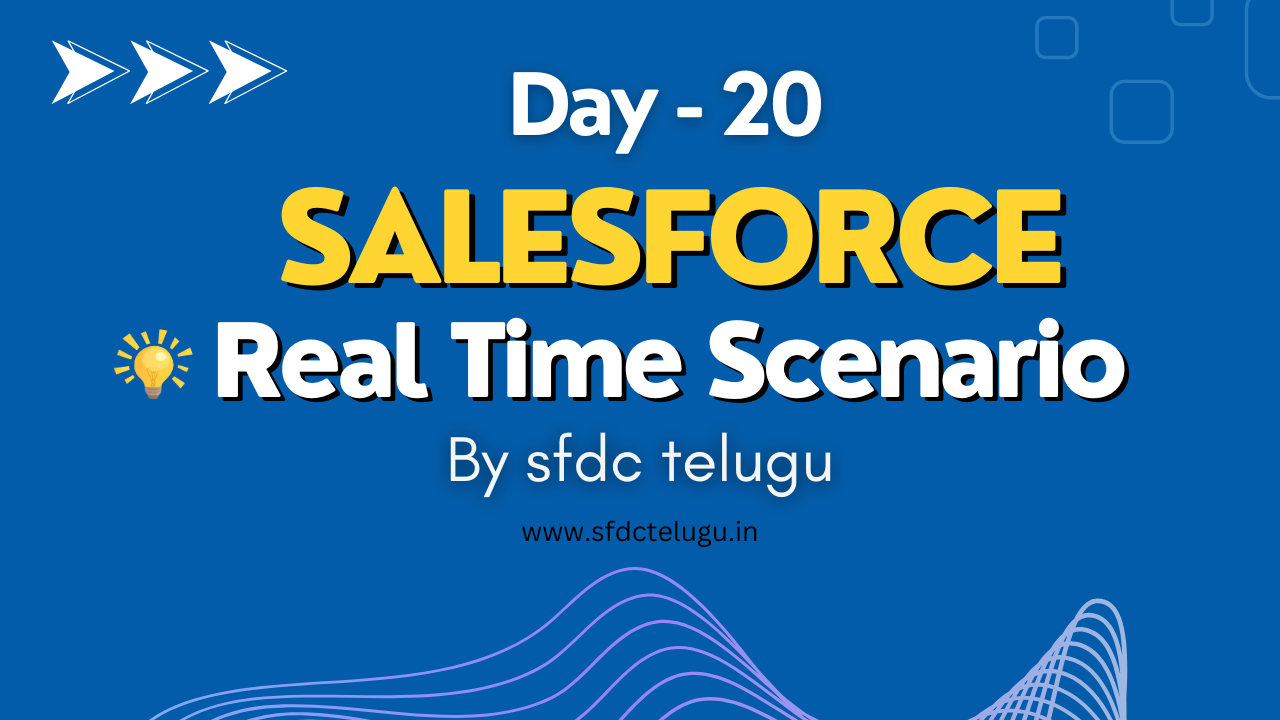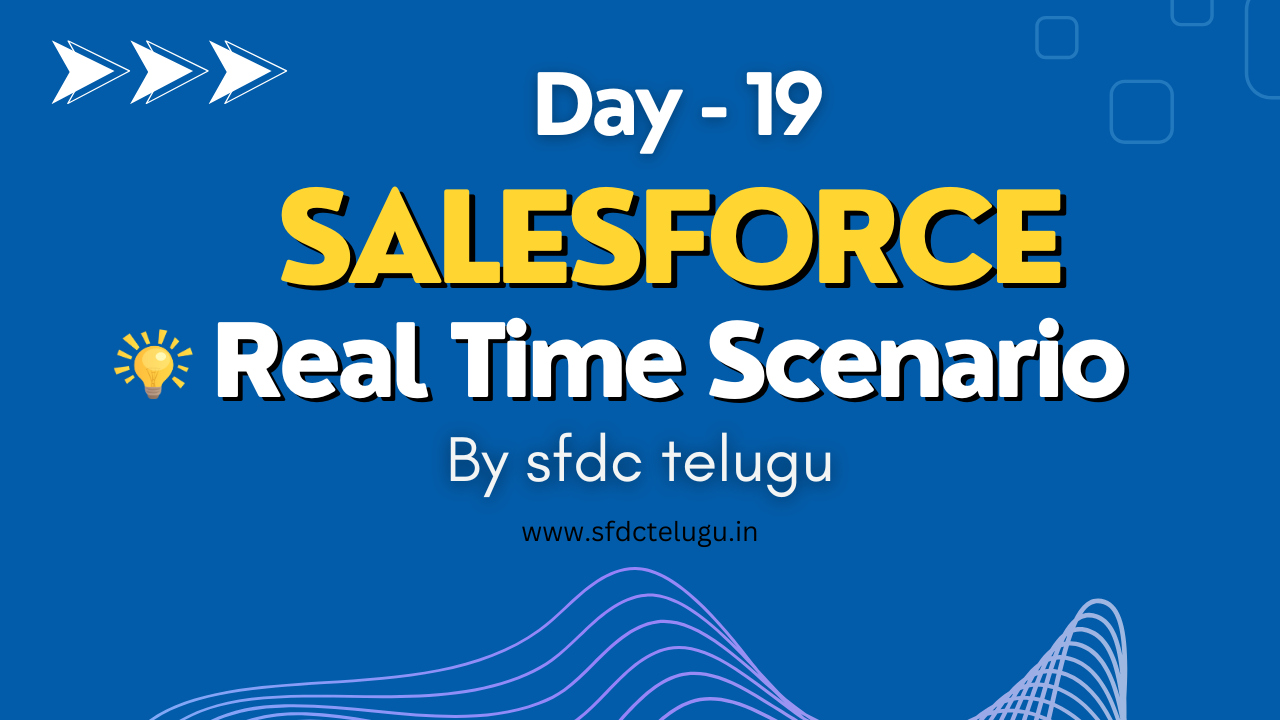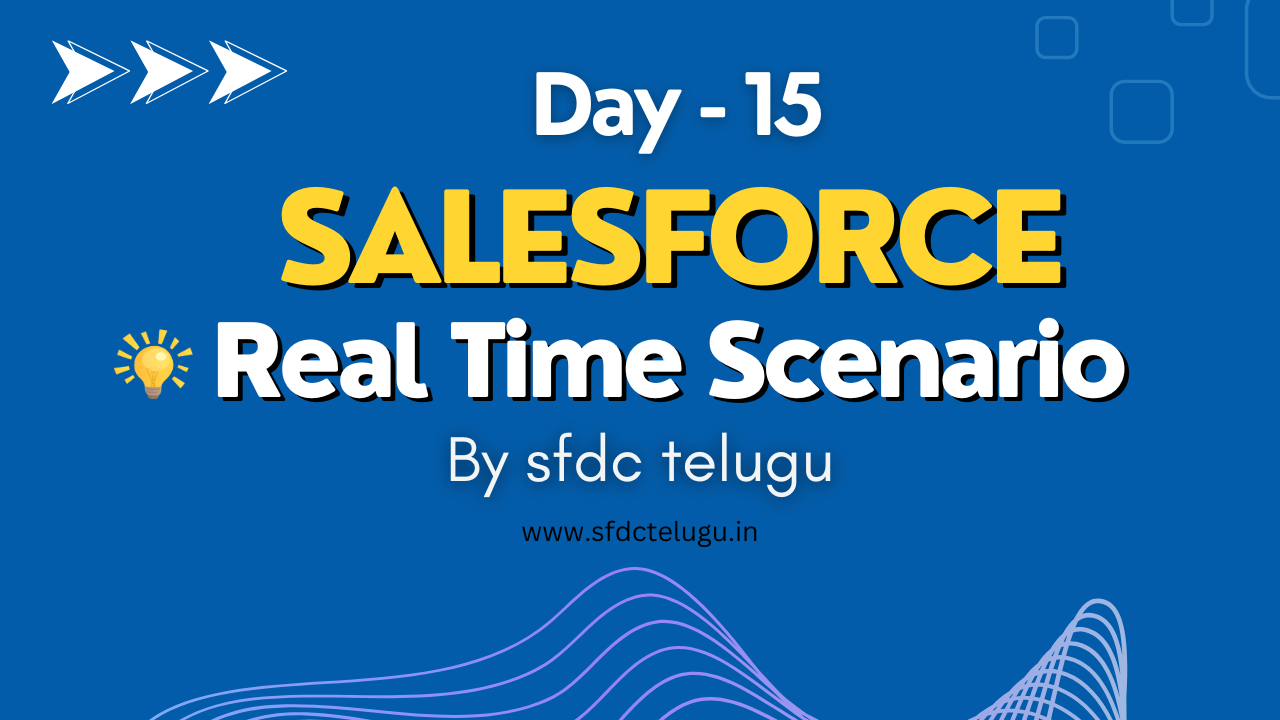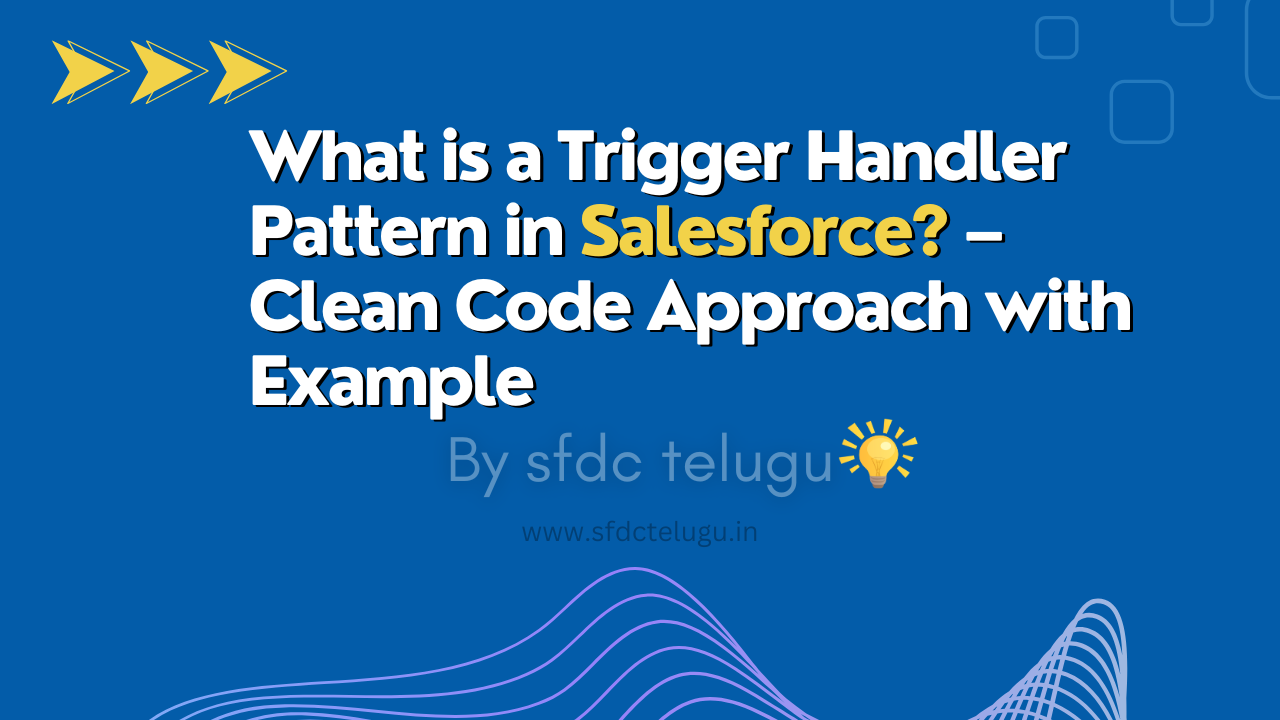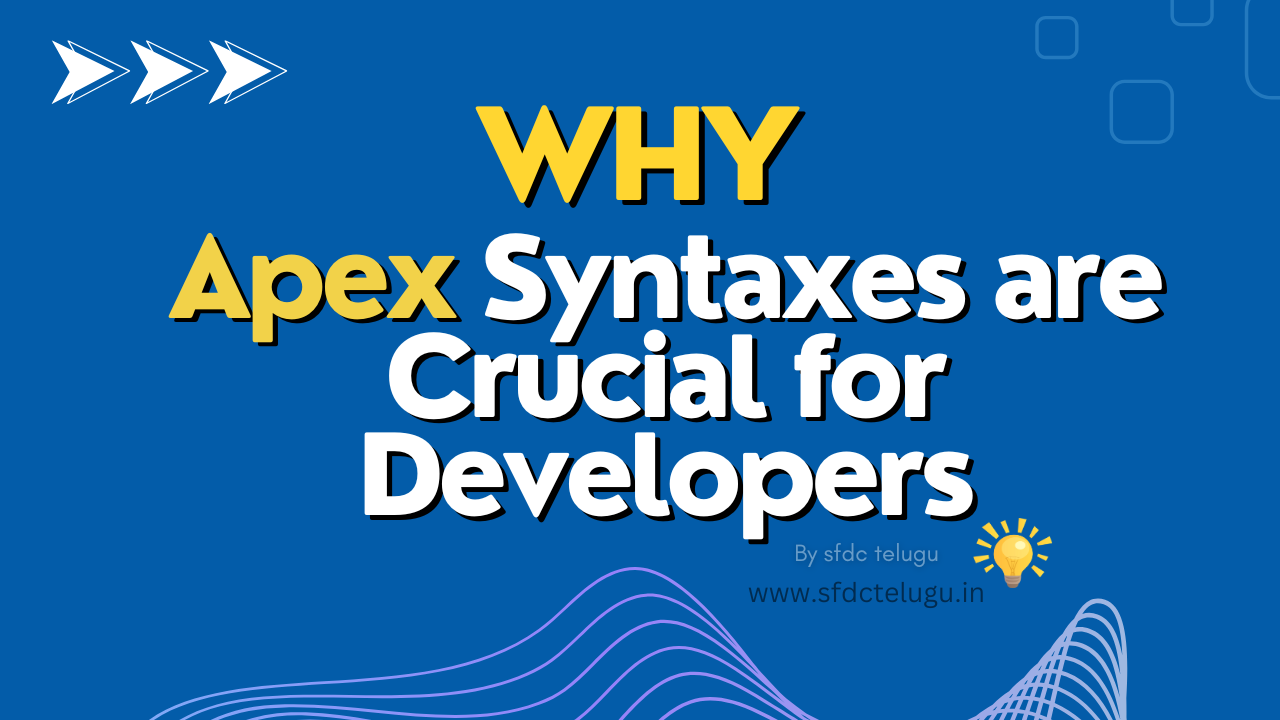What is a Trigger Handler Pattern in Salesforce?
The Trigger Handler Pattern is a design pattern in Salesforce used to organize and manage trigger logic in a clean, reusable, and scalable way. Instead of writing logic directly in the trigger, you delegate that logic to an Apex class.
Why Use Trigger Handler Pattern?
- Separates logic from the trigger
- Makes code easier to test and maintain
- Supports bulk operations and avoids governor limit issues
- Prepares your org for future enhancements
Traditional Trigger (Not Recommended)
trigger ContactTrigger on Contact (before insert) {
for(Contact con : Trigger.new) {
if(con.Email == null) {
con.Email = 'sfdctelugu@gmail.com';
}
}
}This logic works, but it’s hard to scale, test, or reuse.
Using Trigger Handler Pattern (Recommended)
Step 1: Create a Trigger
trigger ContactTrigger on Contact (before insert) {
ContactTriggerHandler.handleBeforeInsert(Trigger.new);
}Step 2: Create a Handler Class
public class ContactTriggerHandler {
public static void handleBeforeInsert(List<Contact> newList) {
for(Contact con : newList) {
if(con.Email == null) {
con.Email = 'sfdctelugu@gmail.com';
}
}
}
}This approach keeps your trigger clean and moves the logic to a separate, testable class.
Conclusion
Using the trigger handler pattern improves code quality and keeps your Salesforce org organized. It’s a best practice followed in professional development projects, and every serious developer should follow it!


























